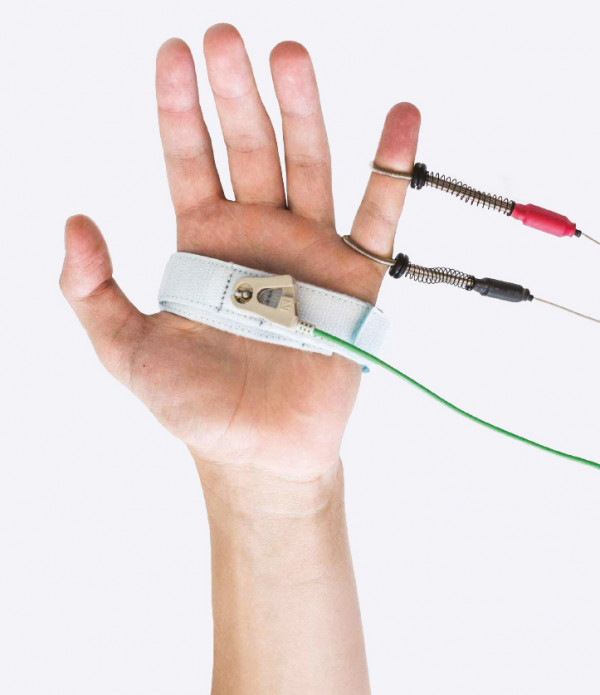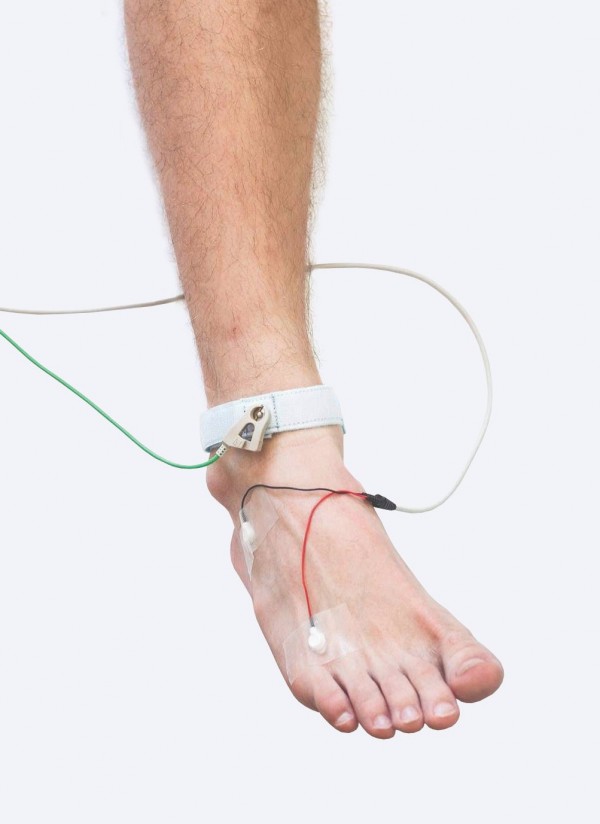Electromyography and electroneurography
Electroneurography (ENoG) and electromyography (EMG) are used for bioelectrical recording of nerve and muscle processes. These are the main functional techniques for investigations of the peripheral nervous system and muscles.
ENoG (nerve impulse conduction test) is performed by electrical stimulation of the nerves at several points using weak or medium strength current. For intramuscular EMG, a needle electrode is inserted into the muscle tissue before evaluating the intramuscular processes during rest, slight contraction and forceful contraction. ENoG and EMG are interrelated, however, the doctor in charge of the investigation decides on the extent of the test and whether both or only one investigation is to be performed.
When are these investigations performed?
Your doctor can recommend these tests if you experience symptoms relating to muscle or nerve malfunction, i.e., numbness of any part of the limbs, muscle weakness, reduced sensitivity of the skin, muscle pain or muscle spasms and other types of pain in the limbs. Both tests are a continuation of clinical investigation, and therefore each patient must be examined individually and the investigation must be based on the complaint, the objective condition and other tests.
Electroneuromyography (ENMG) is used to confirm the diagnoses of muscle and peripheral nervous system conditions:
- Motor neuron disorder (amyotrophic lateral sclerosis (ALS)); the investigation shows the progression and course of the process and eliminates the possibility of other diseases with similar symptoms. Based on the current criterion, ENMG is mandatory for ALS diagnosis.
- Nerve plexus (brachial plexus injury, lumbosacral plexus injury); the investigation evaluates both proximal (at nerve root level) and distal nerve segments.
- Peripheral nerve disorders: polyneuropathy (multiple peripheral nerve damage, mostly caused by diabetes mellitus, alcohol, vitamin deficiency or medicines, e.g., chemotherapy induced peripheral nerve damage), mononeuropathy (damage that occurs to a single nerve, carpal tunnel syndrome, cubital tunnel syndrome, damage to peroneal or radial nerves).
- Neuromuscular junction disorder (myasthenia gravis). Rhythmic neuromuscular stimulation is used for testing the neuromuscular junction, when a nerve is stimulated with a series of impulses.
- Muscle disorders (hereditary and acquired myopathies); the test helps to establish the primary nerve defect, duration, activity and spread of the disease, and to make a partial assessment of the prognosis.
ENMG investigations can confirm damage to the nerve or muscular structure but they are not able to establish a possible cause of the disease.
What cannot be established by the ENMG test?
The investigation results will not be definitive:
- in the presence of CNS disorders (the results will be good if symptoms are caused by multiple sclerosis, cerebrovascular disorder or tumour);
- if the patient is not present during the investigation.
What is the duration of the ENMG test?
The duration of the investigation varies depending on why it is being performed, as well as on the changes that were established during the test. Depending on the aims of the investigation, only ENoG or both tests (ENMG) may be performed. The scope of the test can only be established by the performing doctor. It usually lasts from 20 min to 1 hour. The results are provided at the end of the investigation.
Who performs ENMG investigations?
The investigations are performed by a qualified neurologist with special training.
Who orders an ENMG investigation?
A family physician or any other doctor may send a patient for this investigation. ENMG tests cannot help with finding answers if the investigator is not aware of the suspected diagnosis.
Electroneuromyography (ENMG) test price
What factors affect the price?
The prices indicated below apply to citizens of the Republic of Lithuania and the European Union.
If you are coming from another country please check the price by telephoning or sending an email.

4 reasons
to choose us
- We are among the first providers to start offering this test privately.
- The investigation is performed by highly qualified and experienced specialists.
- We use modern, safe and reliable medical equipment manufactured by the leading global manufacturers.
- You can arrange to have the test, doctor’s consultation and treatment advice on the same day.






